2017 September 30
Jochen Moehr sends a photograph of Ennomos magnaria from Metchosin.
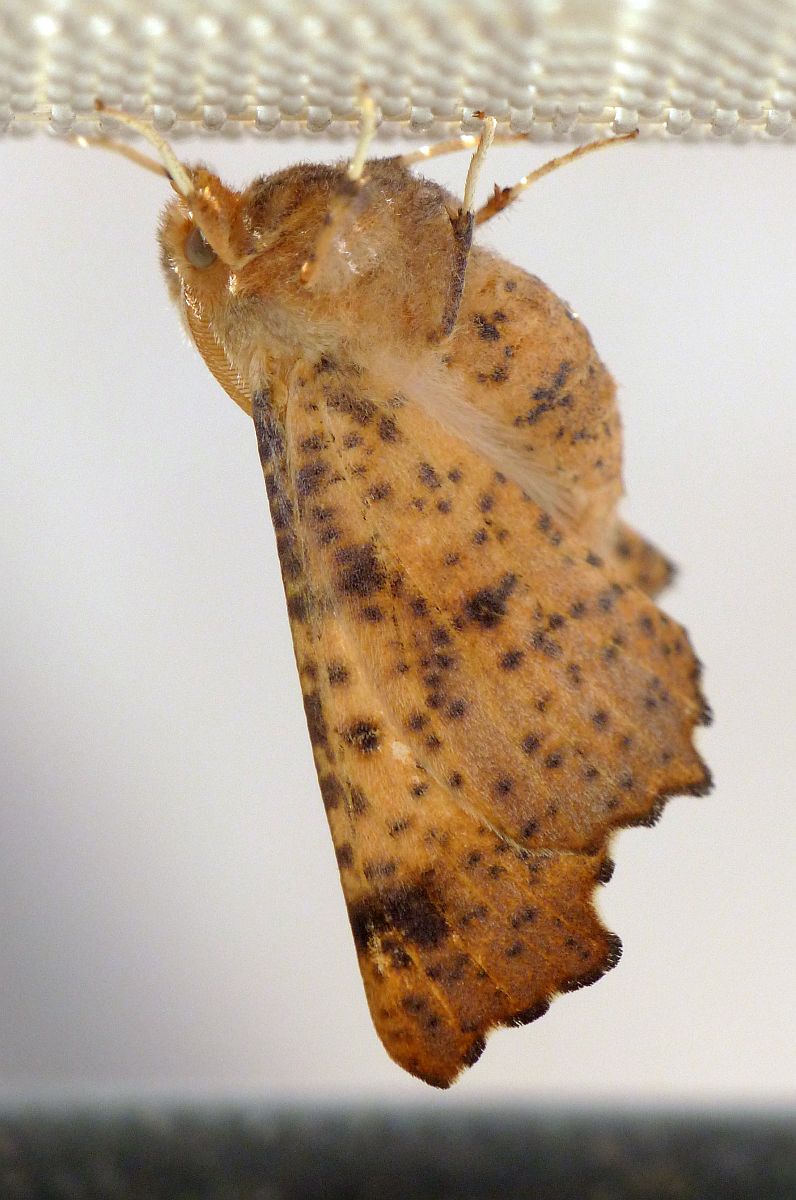
Ennomos magnaria (Lep.: Geometridae) Jochen Moehr

2017 September 30
Jochen Moehr sends a photograph of Ennomos magnaria from Metchosin.

Ennomos magnaria (Lep.: Geometridae) Jochen Moehr

2017 September 29
Reminder: Please send images as attachments in .jpg format.
Jochen Moehr has set us a puzzling problem with the moth below, from Metchosin. Compare it with his similar moth on September 18. We are dealing with two similar species (if they are indeed separate species!), Tetracis pallulata and Tetracis jubararia. Libby Avis writes that Jochen’s September 18 moth is Tetracis pallulata, whereas today’s moth is probably Tetracis jubararia, and Jeremy Tatum agrees.

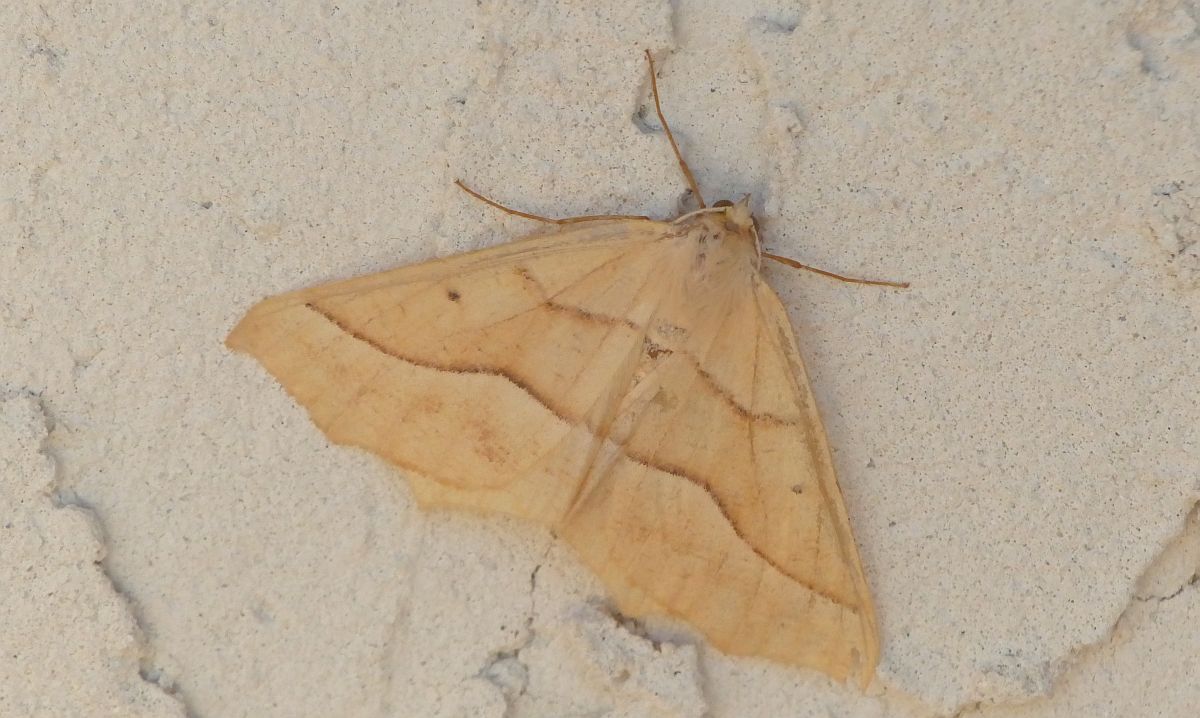
Probably Tetracis jubararia (Lep.: Geometridae) Jochen Moehr September 29

Jochen sends a photograph of a noctuid moth, which Libby has kindly identified for us as Fishea discors.

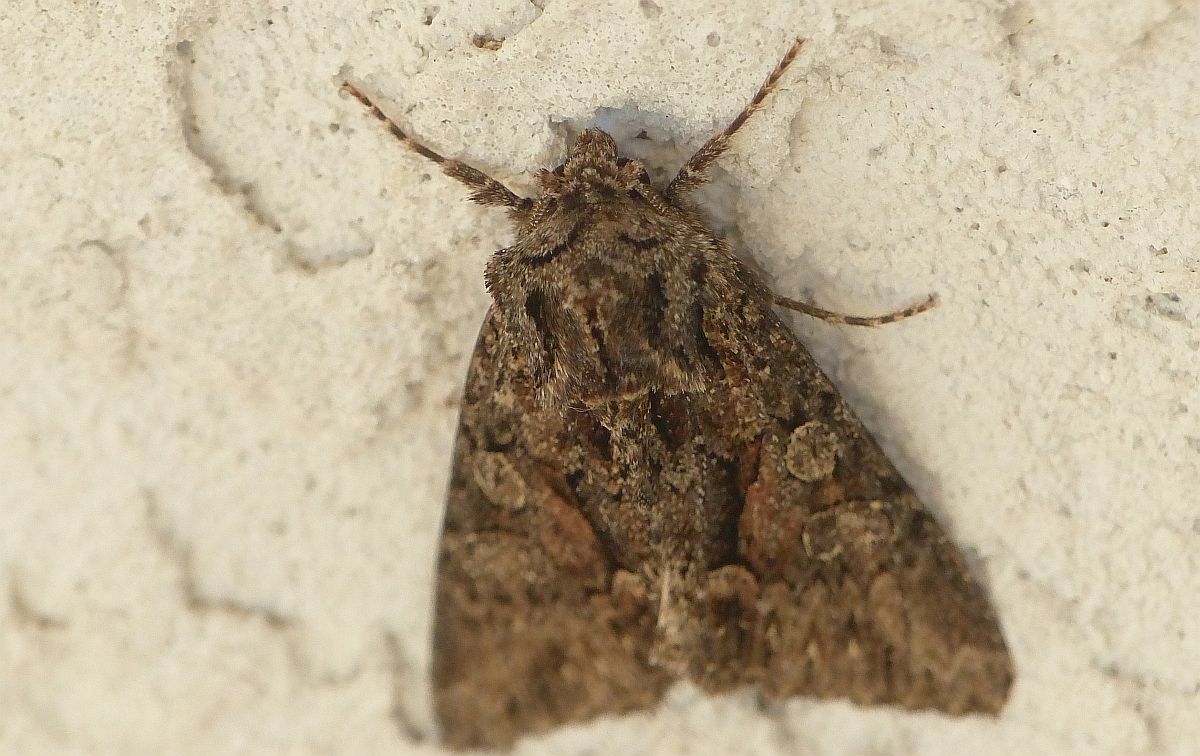
Fishea discors (Lep.: Noctuidae) Jochen Moehr
Val George sends photographs of upperside and underside views of a fresh American Lady at McIntyre Reservoir yesterday afternoon, Sept 28.
Notice that the largest of the white patches near the apex is pointed – it is blunt in our other two ladies. This patch can be white or orange – which can be useful in distinguishing between individuals. For example, it is orange in Mike McGrenere’s September 16 photograph, confirming that there is, or has been, more than one individual at McIntyre reservoir. The freshness of Val’s specimen is also an indication that there is more than one individual – other observers have reported seeing slightly worn specimens.
John Acorn, in his book on British Columbia butterflies, implies that this species, at one time called Hunter’s Butterfly, is somehow connected with hunters and hunting. Its scientific name at one time was Vanessa huntera. I haven’t been able to find the origin of this name, but I suspect that it was more likely named after someone whose name was Hunter, and it has no particular connection with hunting.

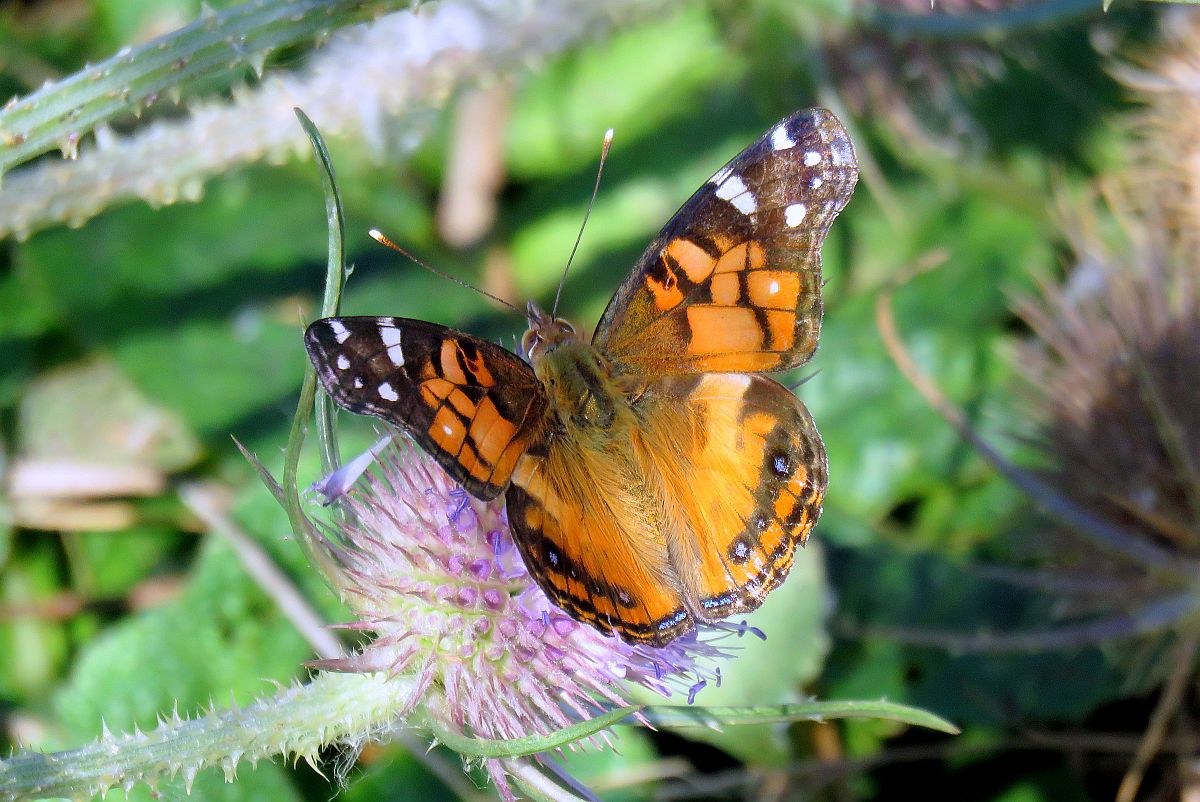
American Lady Vanessa virginiensis (Lep.: Nymphalidae) Val George

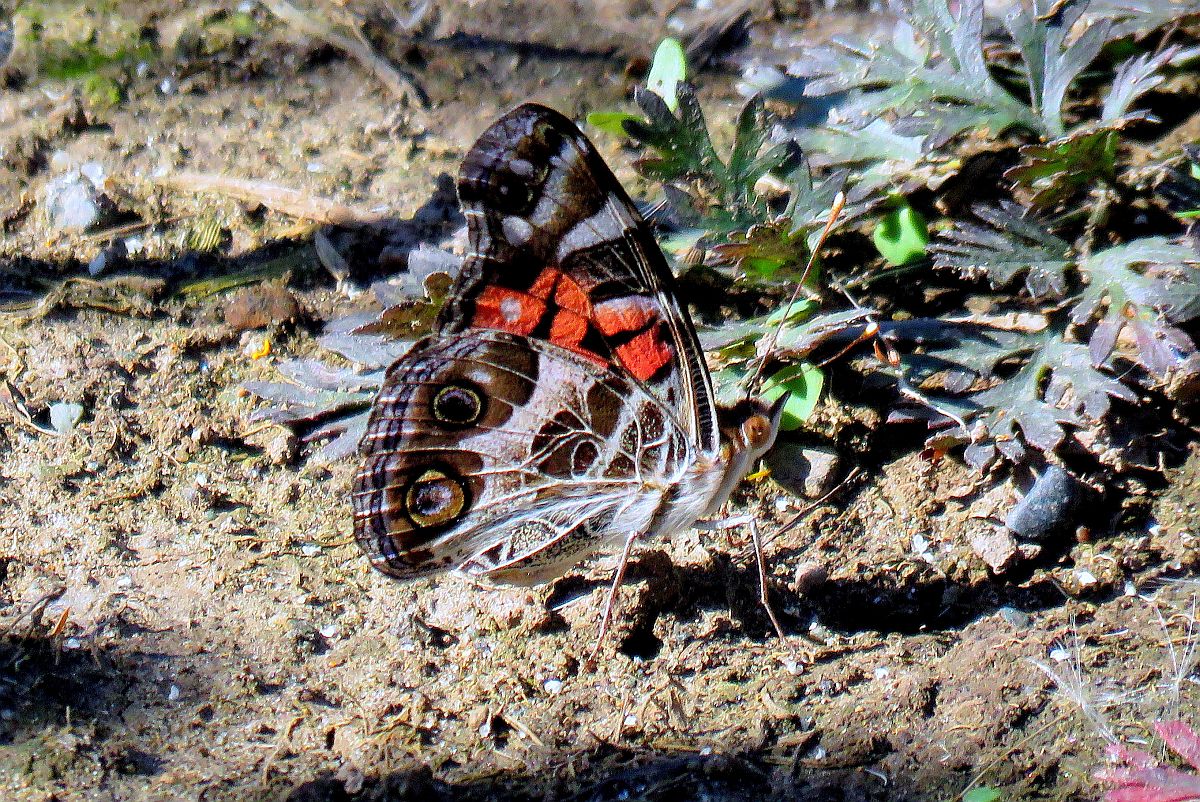
American Lady Vanessa virginiensis (Lep.: Nymphalidae) Val George
Shortly after I wrote the above, we received two photographs from Mark Wynja of an American Lady at McIntyre reservoir. While its patch is white, like Val’s, it is clearly a more worn specimen than Val’s pristine one, and so I think we can be sure that Mike’s, Mark’s and Val’s photographs are all of distinct individuals.

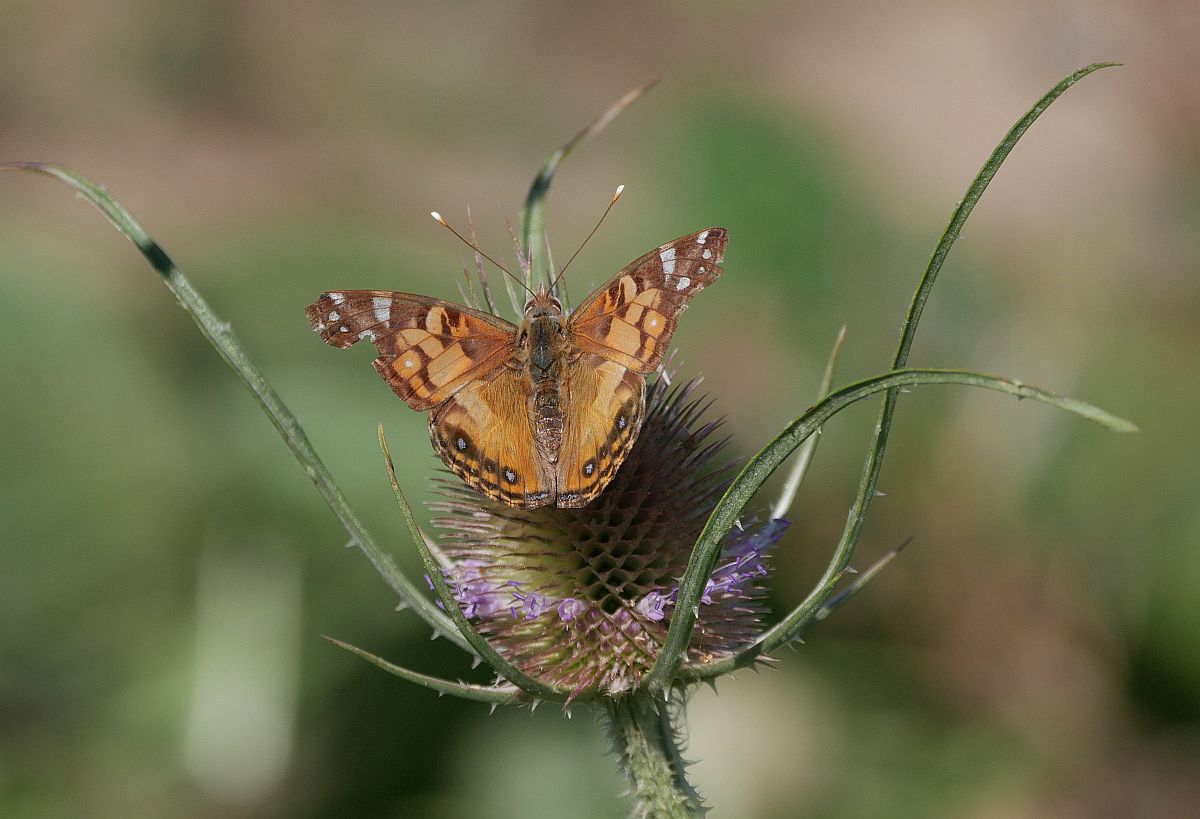
American Lady Vanessa virginiensis (Lep.: Nymphalidae) Mark Wynja

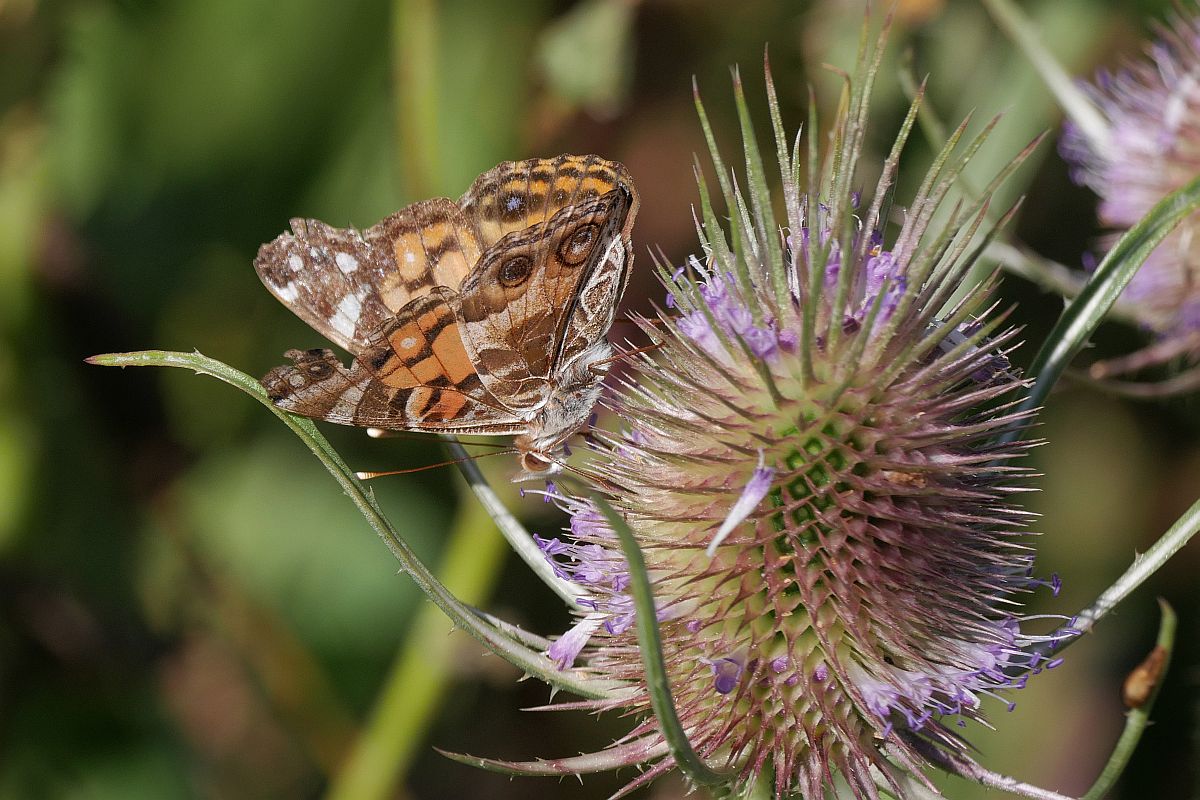
American Lady Vanessa virginiensis (Lep.: Nymphalidae) Mark Wynja
By the way, Jeremy writes, I have heard all sorts of (completely wrong!) names applied to these prickly flowers that are so attractive to butterflies at McIntyre reservoir. The plant is Teasel Dipsacus fullonum. It is not a thistle.
Mark tells us that Guy Monty took a photo of an American Lady on Little Mountain in Errington, near Parksville, on the same day, September 27.
Mike and Barb McGrenere write: In case you are interested [Yes, I am – always! Jeremy], we visited Mount Washington today and saw about three Green Commas (we believe) at Paradise Meadows.
Jeremy responds: Commas are difficult, particularly at Mount Washington, where several species may be expected, but I agree that these are Green Commas. If anyone feels that we may be mistaken, please let us know.

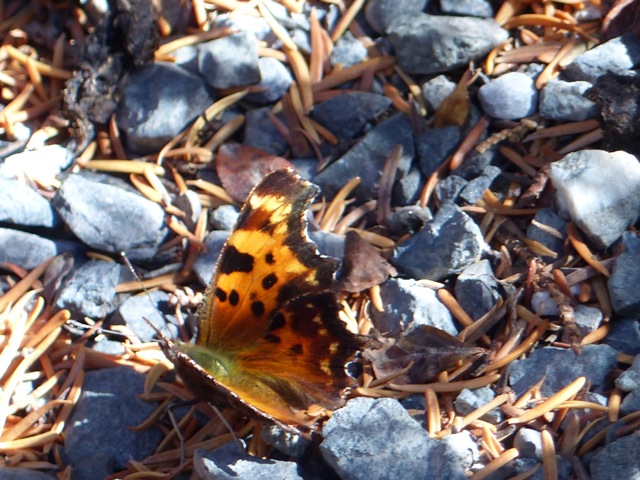
Green Comma Polygonia faunus (Lep.: Nymphalidae) Mike McGrenere

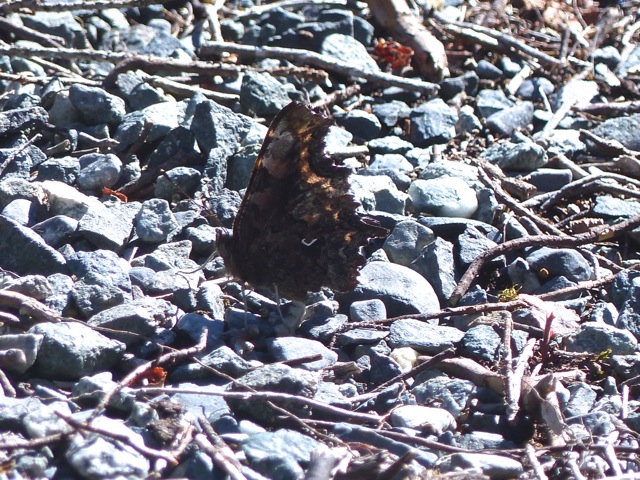
Green Comma Polygonia faunus (Lep.: Nymphalidae) Mike McGrenere
Jeremy Tatum writes: Here is another Ni Moth reared from a caterpillar found in the Brussels sprouts fields next to McIntyre reservoir. This one was photographed in natural daylight, and the colour rendering is better than the one shown yesterday.

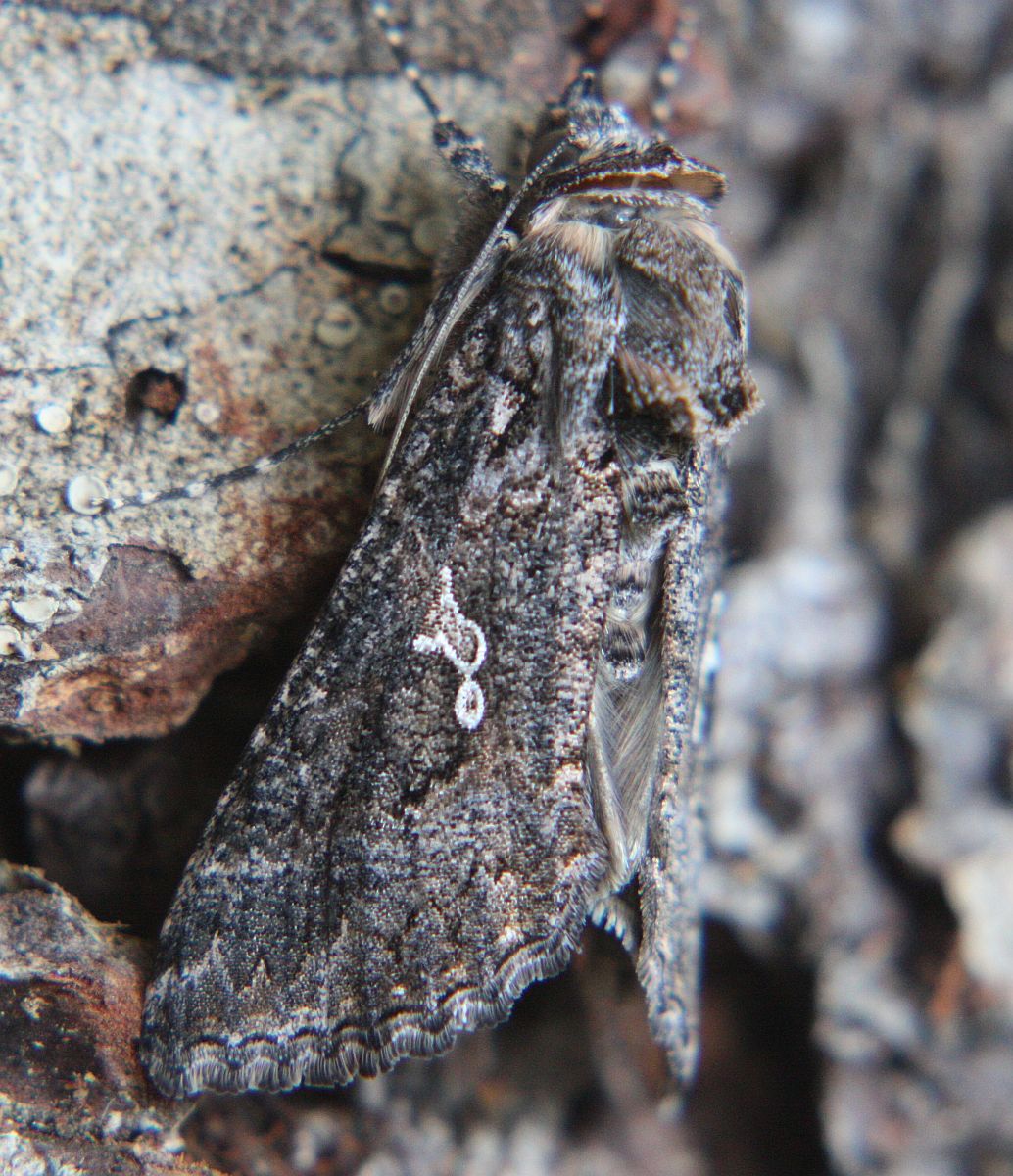
Ni Moth Trichoplusia ni (Lep.: Noctuidae – Plusiinae) Jeremy Tatum
2017 September 28 morning
Jochen Moehr sends photographs from Metchosin of a Robber Fly, which he describes as being as aesthetically pleasing as an Apache attack helicopter. Rob Cannings writes: This is a male Laphria asturina or L. fernaldi. These two are very difficult to tell apart and I’m not convinced yet that they are distinct species.

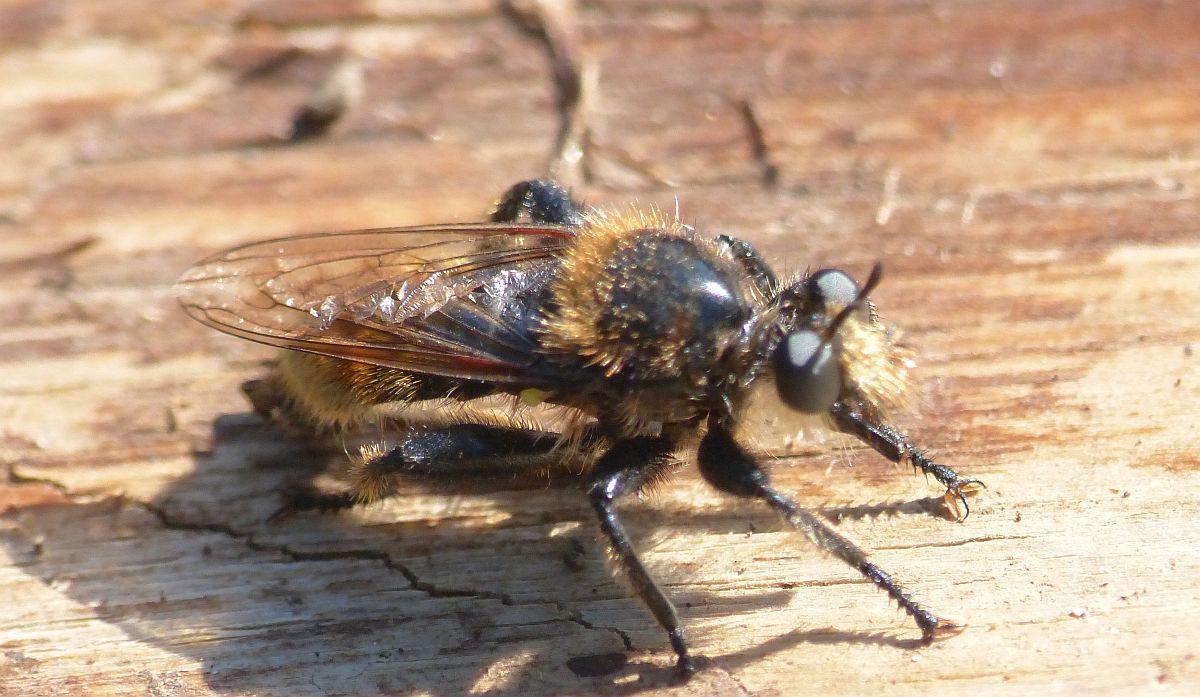
Robber fly Laphria asturina/fernaldi (Dip.: Asilidae) Jochen Moehr

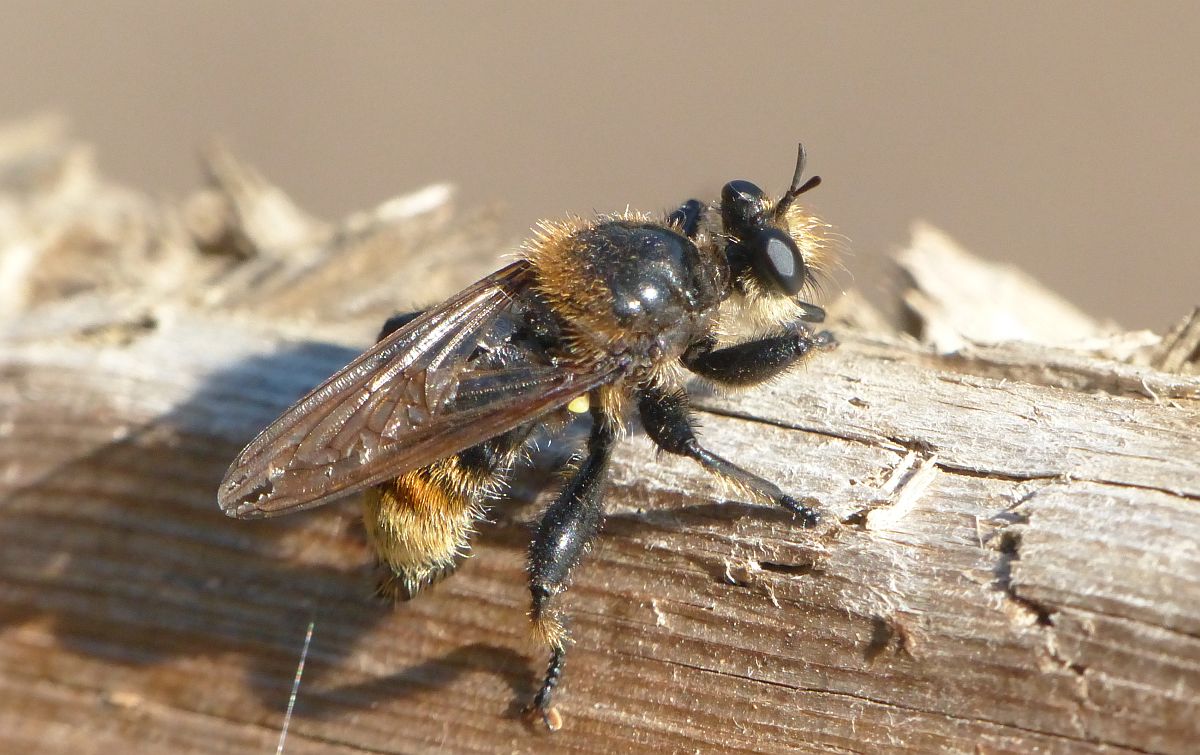
Robber fly Laphria asturina/fernaldi (Dip.: Asilidae) Jochen Moehr
Jeremy Tatum found a small (6 mm) beetle on the windshield of his car when he was parked near McIntyre reservoir yesterday. Charlene Wood writes: It looks like a Sitona sp. broad-nosed weevil (Curculionidae: Entiminae), which includes many non-native pests of clover, pea, etc. Looks most like a clover weevil, Sitona hispidulus, which is an introduced species from Eurasia, but there are a few other possible species.

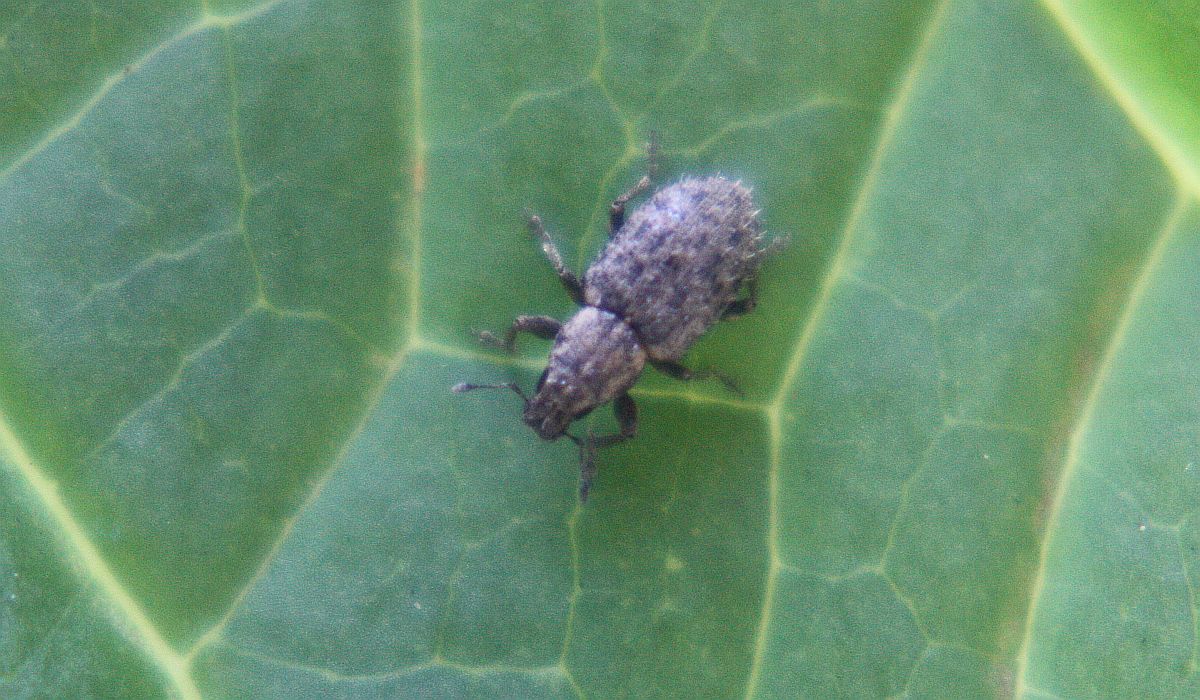
Sitona sp (probably hispidulus) (Col.: Curculionidae – Entiminae) Jeremy Tatum
Jeremy Tatum writes: The caterpillar of a Ni Moth shown on September 11 produced the moth shown below. The moth emerged in the middle of last night, so I had to try to photograph it in artificial light when I was half asleep. Then I drove out to the Martindale area to release it there. When I got back, a second moth had emerged, and I had to start all over again. The second moth was from the caterpillar shown on August 28, 30, September 2,7,11. I believe it is Zale lunata.

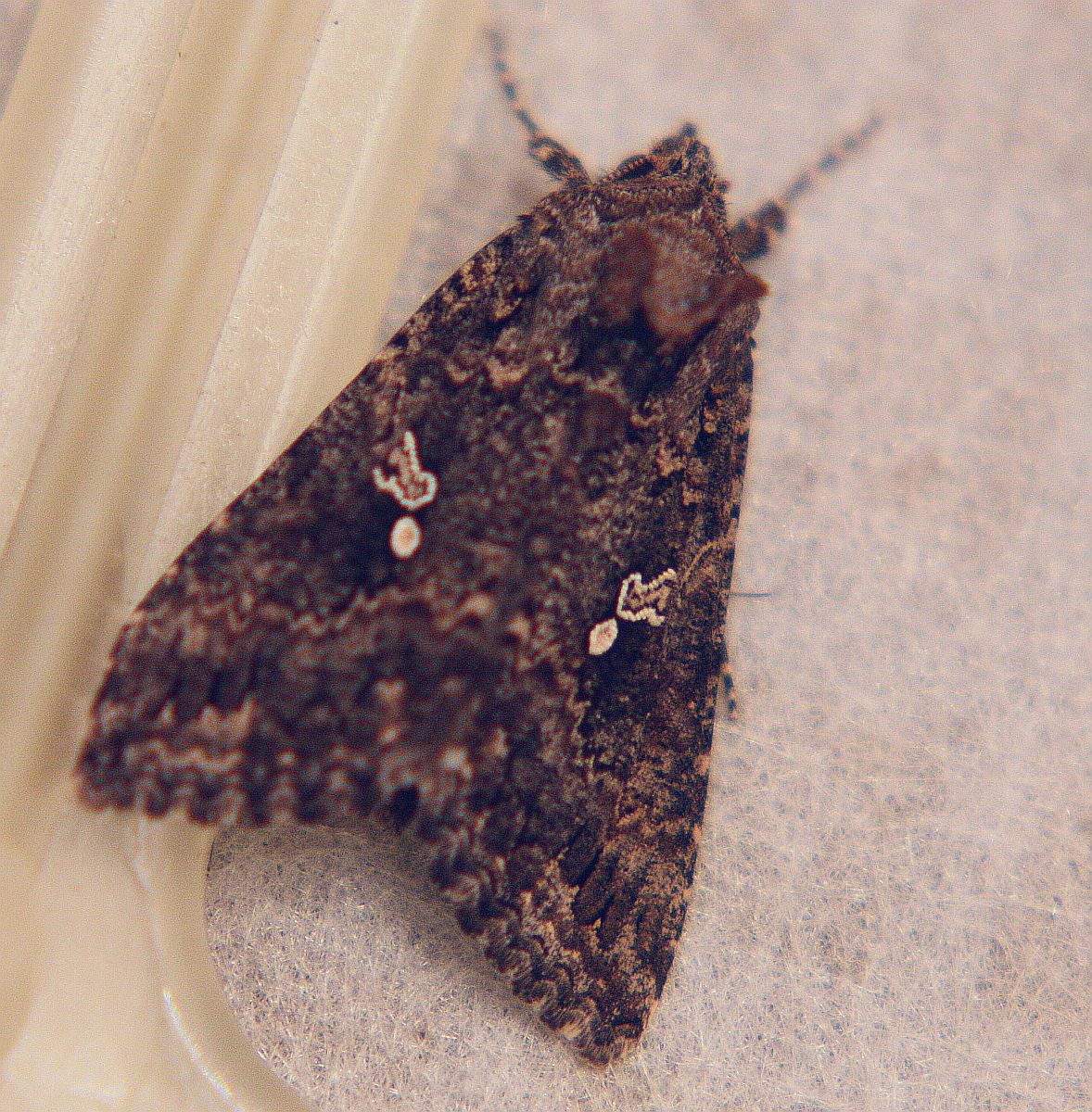
Ni Moth Trichoplusia ni (Lep.: Noctuidae – Plusiinae) Jeremy Tatum

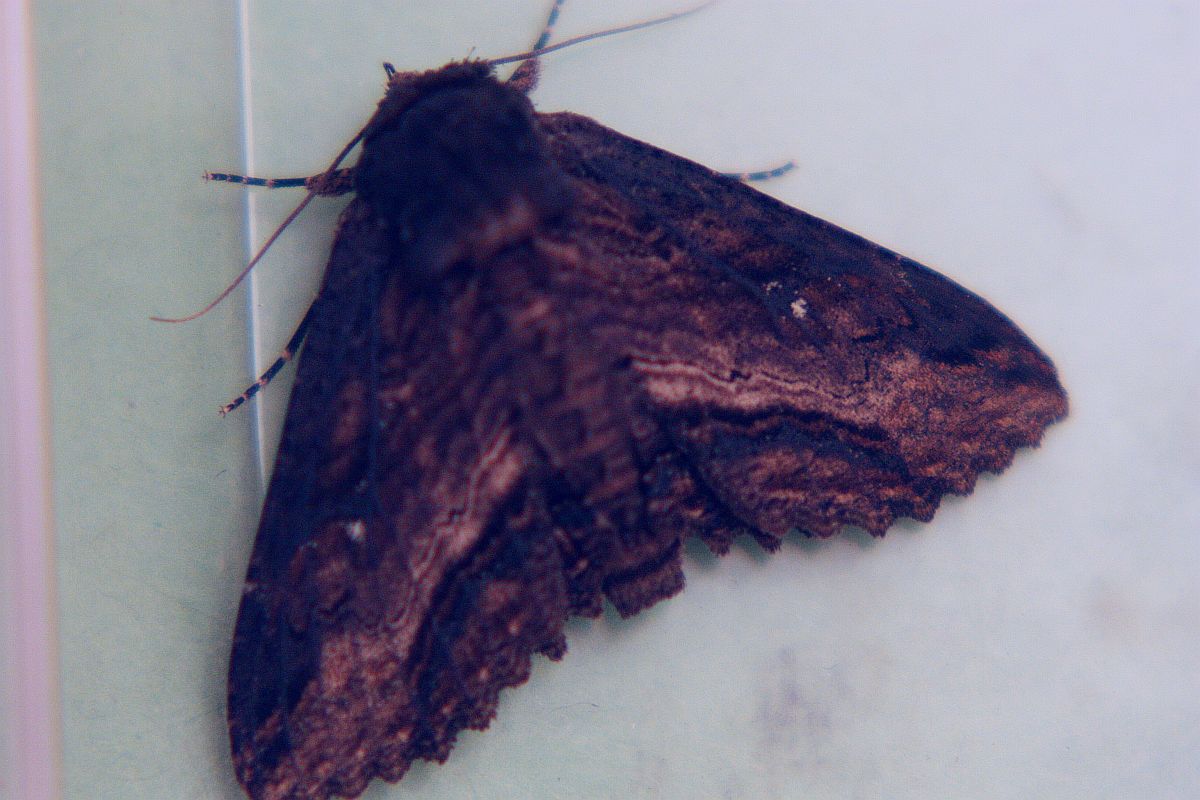
Zale lunata (Lep.: Erebidae – Erebinae) Jeremy Tatum
Aziza Cooper sends a photograph of a Purplish Copper from Saanichton (Cordova) Spit.

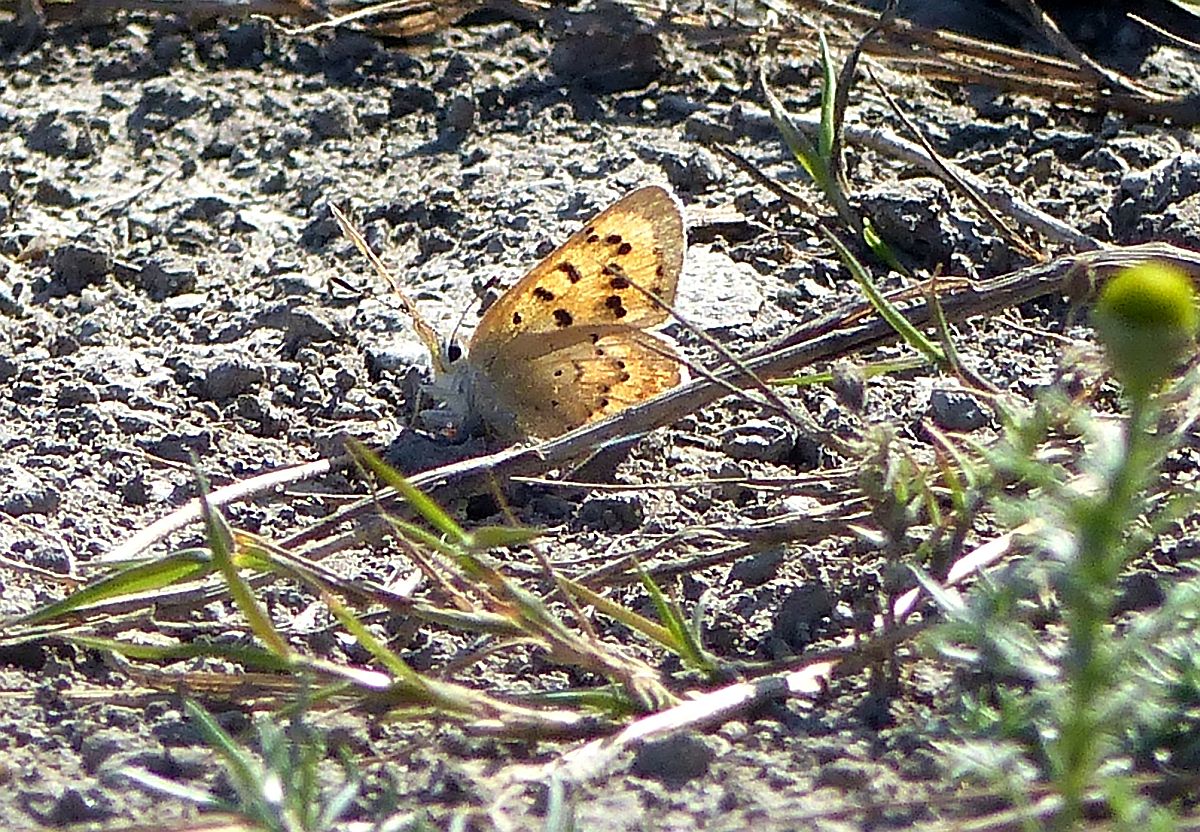
Purplish Copper Lycaena helloides (Lep.: Lycaenidae) Aziza Cooper
Jeremy Tatum writes: At press time no word from yesterday’s observations at McIntyre reservoir, but I can tell you that there were several Cabbage Whites, one Orange Sulphur (deep orange, no problem with identity), several Painted Ladies, at least one (could be more) American Lady, a probable Purplish Copper, and several Autographa californica. So it is well worth a visit there on this, the last day before the rains begin. Also a report of a Red Admiral from Whiffin Spit.
2017 September 27
Here are three geometrid moths from Jochen Moehr’s Metchosin home this morning:

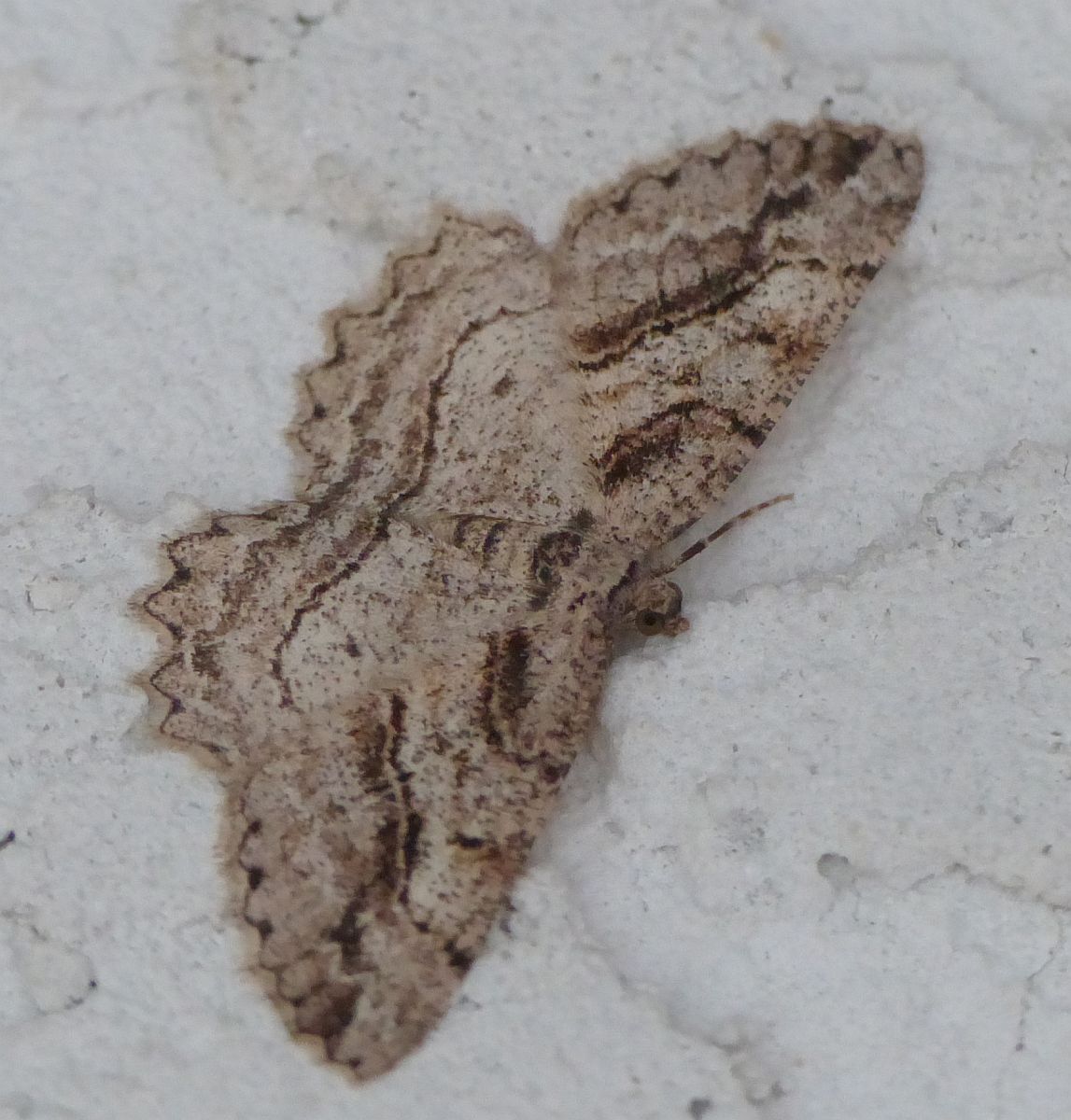
Neoalcis californiaria (Lep.: Geometridae) Jochen Moehr

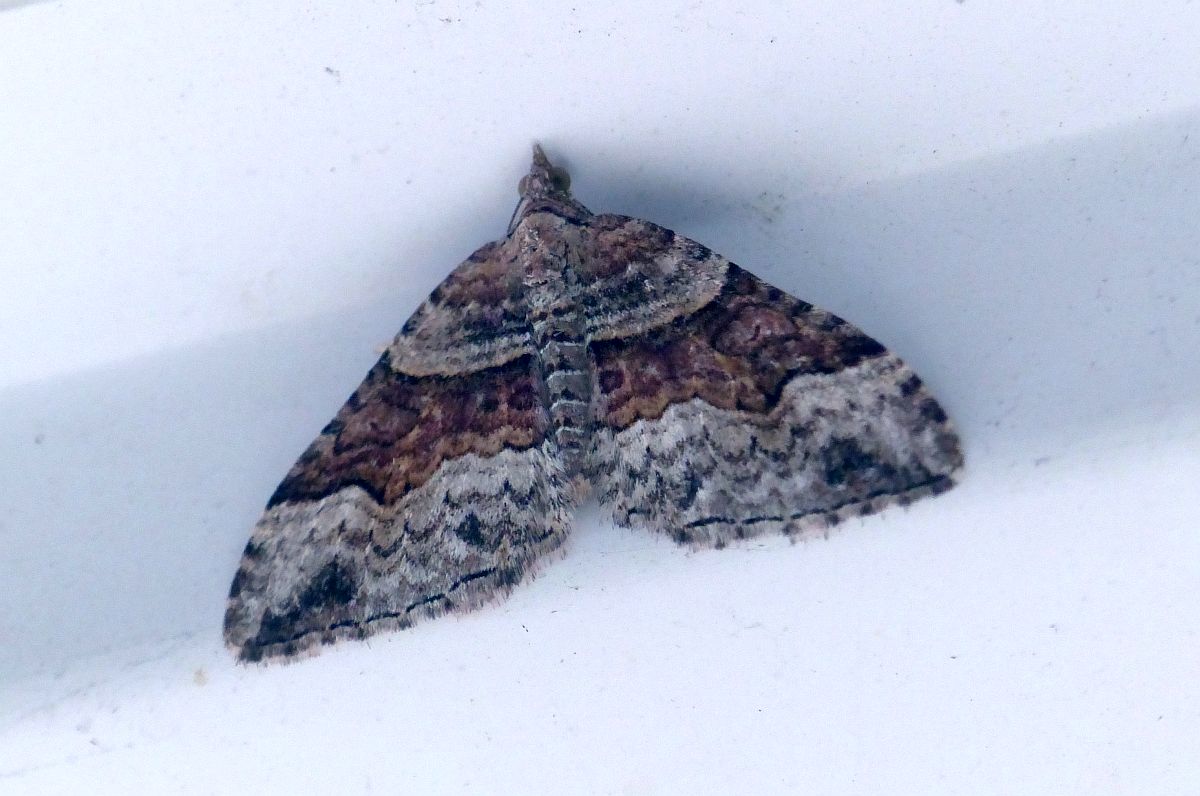
Xanthorhoe defensaria (Lep.: Geometridae) Jochen Moehr

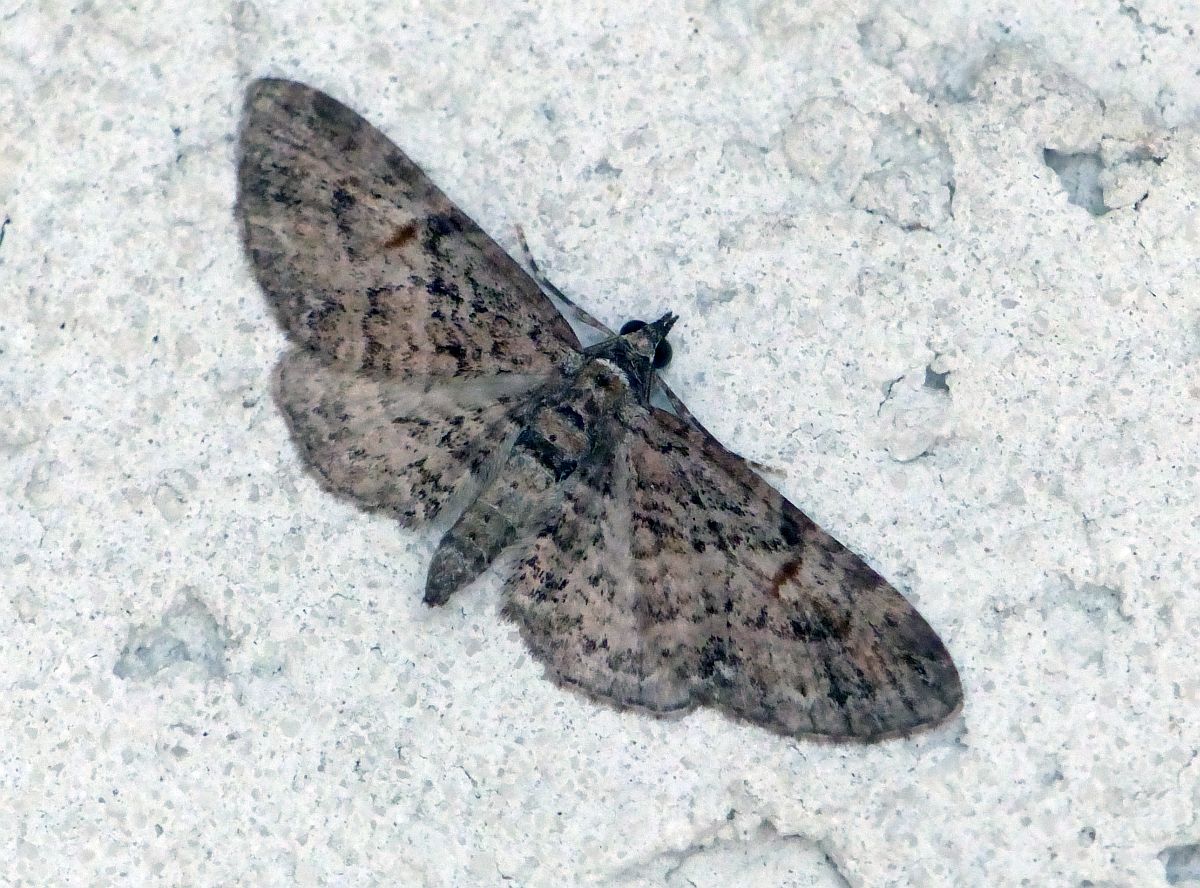
Eupithecia graefii (Lep.: Geometridae) Jochen Moehr
At least five butterfly-ers visited McIntyre reservoir today. We’ll write about what they saw in tomorrow’s posting. In the meantime, in case you are wondering whether it is worth visiting McIntyre reservoir tomorrow (Thursday), which might be the last day before the onset of the rainy season, the answer is definitely yes. There are still sulphurs and ladies there, though you might have to wait ten or fifteen minutes before you spot one.
2017 September 27 morning
Rarities Alert!
Gordon Hart writes: I have enclosed photos of the American Lady that Anne-Marie and I saw at Whiffin Spit yesterday. After seeing the rather drab Lark Sparrow in the parking lot, it was exciting to see several Painted Ladies and then this American Lady in the grassy area part way to the tip where the Meadowlarks are usually found.
Later, while viewing the Lark Sparrow again with Cheryl Mackie and Marilyn Lambert, they told us that Avery Bartels, Rocky Point bander, saw a Monarch and a Red Admiral on the morning of September 25. Avery is familiar with Monarchs and was certain of the identification. I suppose if American Ladies can migrate through here occasionally, then Monarchs can as well.
Jeremy Tatum writes: Thanks to Gordon and Anne-Marie, I, too, saw the Whiffin Spit American Lady – in the area where there is lots of Gumweed, opposite the washroom, and where the Grasshopper Sparrow was seen a few years ago. Unlike the slightly worn specimen that is doubtless still at McIntyre reservoir, the Whiffin Spit butterfly was pristine fresh and very obvious.
Usually we caution that the provenance of Monarchs is always suspect, because of their commercial release at weddings. However, there is no need to assume that all Monarch sightings pertain to such releases, and we must bear in mind that some of them may be genuine wild butterflies – particularly when seen in areas remote from cities, such as Rocky Point.
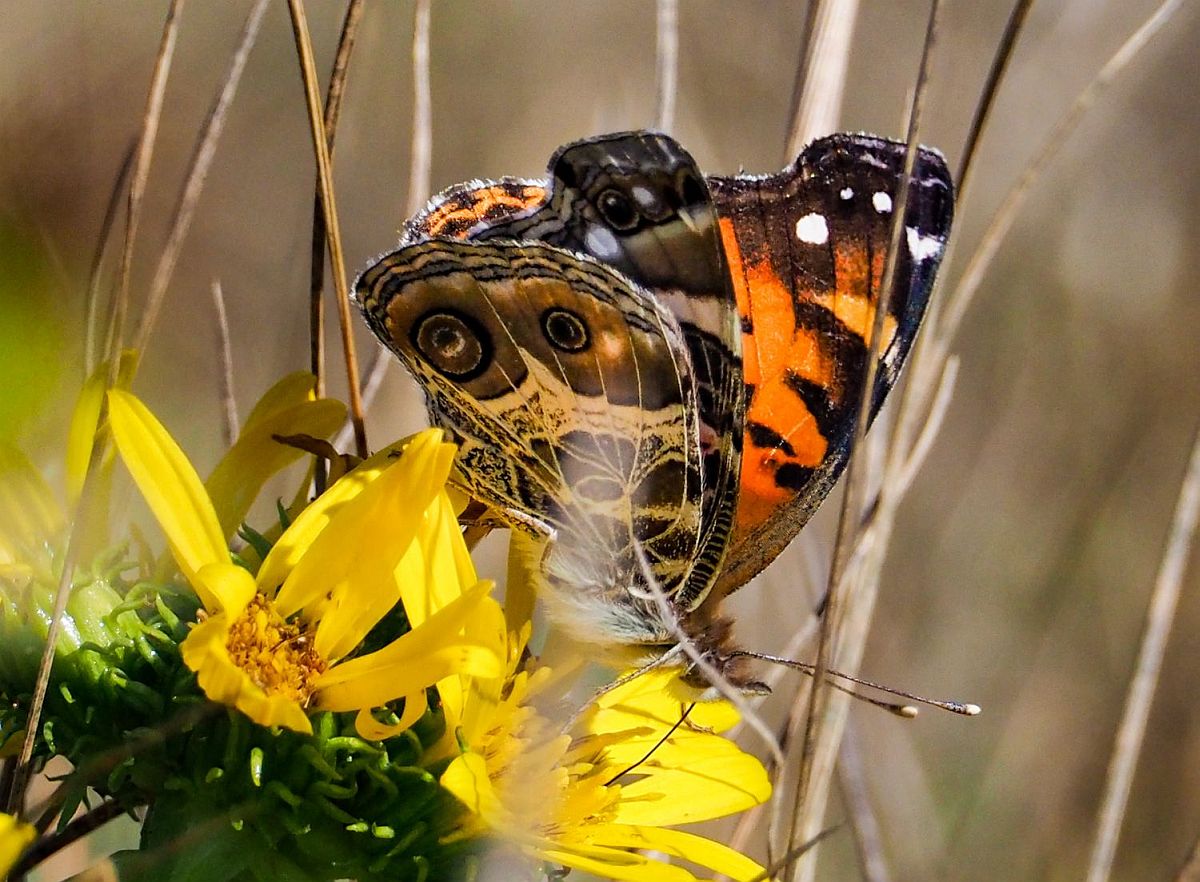
American Lady Vanessa virginiensis (Lep.: Nymphalidae) Gordon Hart

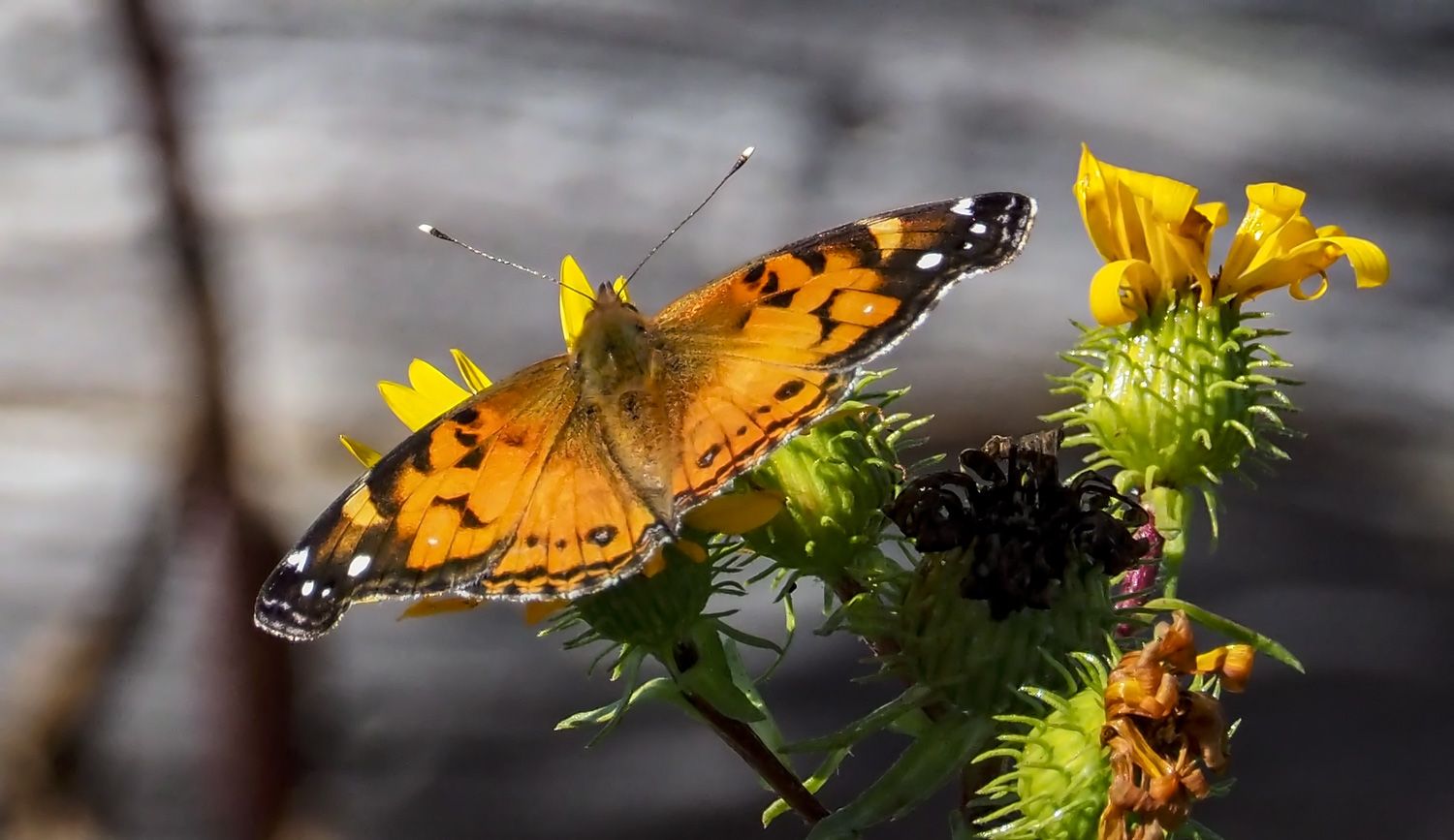
American Lady Vanessa virginiensis (Lep.: Nymphalidae) Gordon Hart
And here’s a not-quite-so-rare butterfly from Jeremy Tatum’s Saanich apartment this morning.

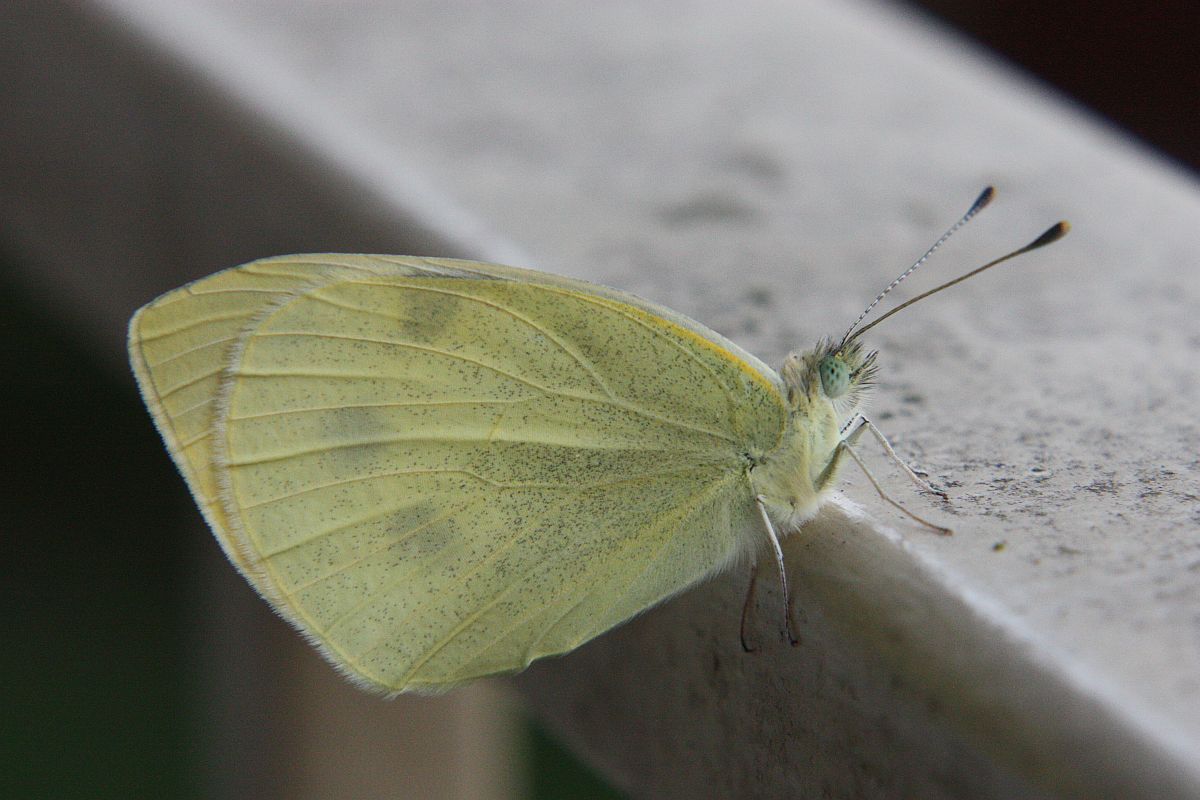
Cabbage White Pieris rapae (Lep.: Pieridae) Jeremy Tatum
Annie Pang is rearing a Spotted Tiger Moth caterpillar (see September 16), which has now spun a wonderful cocoon:

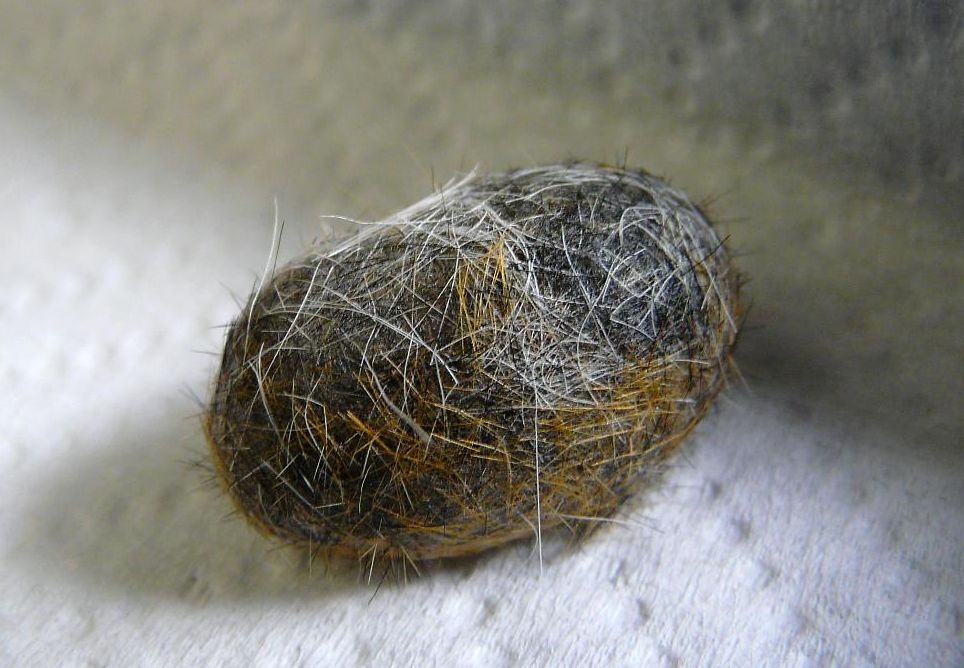
Spotted Tiger Moth Lophocampa maculata (Lep.: Erebidae – Arctiinae) Annie Pang